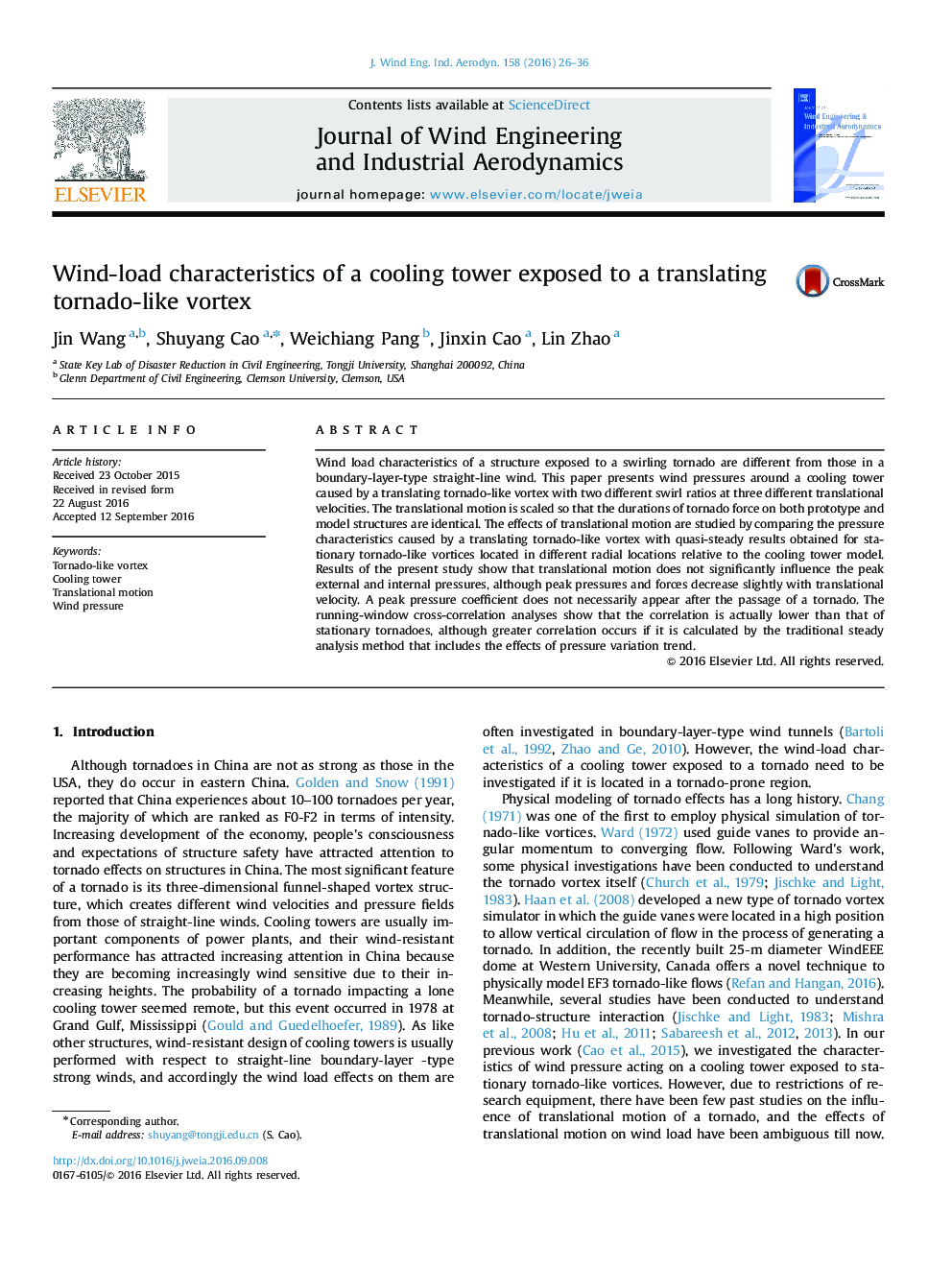| Article ID | Journal | Published Year | Pages | File Type |
|---|---|---|---|---|
| 4924977 | Journal of Wind Engineering and Industrial Aerodynamics | 2016 | 11 Pages |
Abstract
Wind load characteristics of a structure exposed to a swirling tornado are different from those in a boundary-layer-type straight-line wind. This paper presents wind pressures around a cooling tower caused by a translating tornado-like vortex with two different swirl ratios at three different translational velocities. The translational motion is scaled so that the durations of tornado force on both prototype and model structures are identical. The effects of translational motion are studied by comparing the pressure characteristics caused by a translating tornado-like vortex with quasi-steady results obtained for stationary tornado-like vortices located in different radial locations relative to the cooling tower model. Results of the present study show that translational motion does not significantly influence the peak external and internal pressures, although peak pressures and forces decrease slightly with translational velocity. A peak pressure coefficient does not necessarily appear after the passage of a tornado. The running-window cross-correlation analyses show that the correlation is actually lower than that of stationary tornadoes, although greater correlation occurs if it is calculated by the traditional steady analysis method that includes the effects of pressure variation trend.
Related Topics
Physical Sciences and Engineering
Energy
Renewable Energy, Sustainability and the Environment
Authors
Jin Wang, Shuyang Cao, Weichiang Pang, Jinxin Cao, Lin Zhao,
